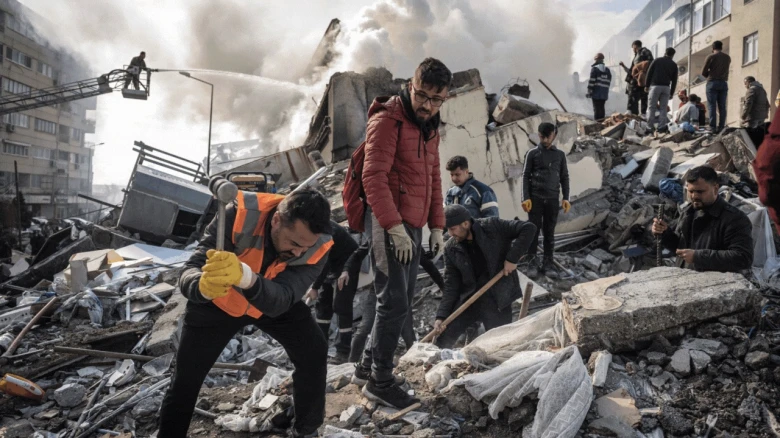The New Year began with a tragic chapter etched into the collective memory of Japan...
Digital Desk: In the early hours of New Year's day, Japan was shaken by a powerful 7.5 magnitude earthquake that struck Ishikawa prefecture on the main island of Honshu. The aftermath left at least 48 people dead, and the nation grappling with the urgent task of rescuing survivors amid powerful aftershocks.
The quake triggered tsunami waves exceeding a meter in height, wreaking havoc along the Noto Peninsula. The destruction was extensive, with houses reduced to rubble, fishing boats sunk or washed ashore, and highways torn apart by landslides. In the city of Wajima, a once vibrant community, a fire tore through the old market area, further complicating rescue efforts.
Witnesses described the earthquake as "long and violent," leaving buildings damaged by fire, and houses flattened. Akiko, standing outside her parent's tilting home in Wajima, expressed amazement that her family emerged unscathed. The emotional toll on survivors is evident as they grapple with the shock of the disaster. Tsugumasa Mihara, 73, shared his experience, recalling the "powerful jolt" that sent hundreds of residents in the nearby town of Shika queuing for water.
The death toll stood at 48 according to local authorities, but it was anticipated to rise as rescuers sifted through the debris.
Prime Minister Fumio Kishida acknowledged the "very extensive damage" and emphasized the race against time to locate and rescue victims. Aerial footage revealed the scale of the destruction, showcasing a massive fire in Wajima's old market area and a collapsed seven-story commercial building.
Compounding the tragedy, nearly 33,000 households were without power in freezing temperatures, while many cities faced water shortages. The U.S. Geological Survey reported a magnitude of 7.5, slightly differing from Japan's meteorological agency, which measured it at 7.6. Over 150 aftershocks rattled the region, hindering rescue efforts and sustaining a climate of fear.
As the disaster unfolded, social media captured terrifying scenes of buildings, bridges, and houses wobbling violently.
Images portrayed a nation in distress, with people seeking refuge in shops and train stations. Collapsed houses, cracked roads, and landslides marked the landscape, with forecasters warning that rains could exacerbate the situation by further loosening soil on hillsides.
Despite the initial fears of larger tsunamis, Japan eventually lifted all tsunami warnings. Nevertheless, the aftermath revealed the enormity of the challenges ahead. Firefighters in Wajima courageously navigated the debris under a collapsed commercial building, urging survivors to "hang in there." Reports suggested that as many as 200 structures were engulfed in flames, forcing evacuations in darkness, some with blankets, and others cradling infants.
The New Year began with a tragic chapter etched into the collective memory of Japan. The resilience of the affected communities and the tireless efforts of rescuers stand as a testament to the strength and unity required to rebuild in the face of adversity.

Leave A Comment